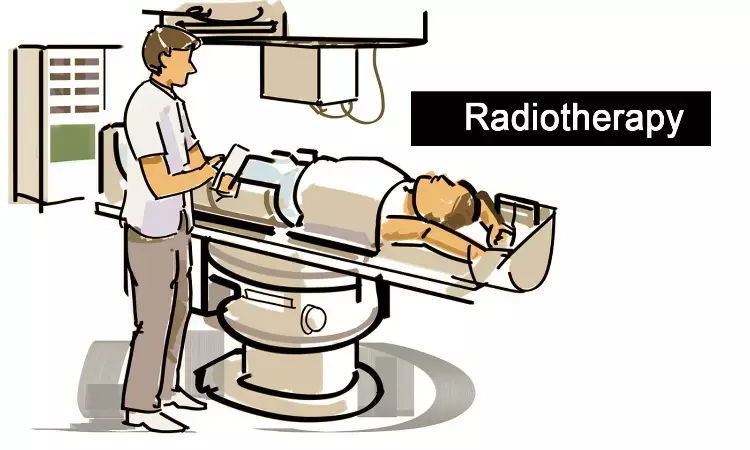- Home
- Medical news & Guidelines
- Anesthesiology
- Cardiology and CTVS
- Critical Care
- Dentistry
- Dermatology
- Diabetes and Endocrinology
- ENT
- Gastroenterology
- Medicine
- Nephrology
- Neurology
- Obstretics-Gynaecology
- Oncology
- Ophthalmology
- Orthopaedics
- Pediatrics-Neonatology
- Psychiatry
- Pulmonology
- Radiology
- Surgery
- Urology
- Laboratory Medicine
- Diet
- Nursing
- Paramedical
- Physiotherapy
- Health news
- Fact Check
- Bone Health Fact Check
- Brain Health Fact Check
- Cancer Related Fact Check
- Child Care Fact Check
- Dental and oral health fact check
- Diabetes and metabolic health fact check
- Diet and Nutrition Fact Check
- Eye and ENT Care Fact Check
- Fitness fact check
- Gut health fact check
- Heart health fact check
- Kidney health fact check
- Medical education fact check
- Men's health fact check
- Respiratory fact check
- Skin and hair care fact check
- Vaccine and Immunization fact check
- Women's health fact check
- AYUSH
- State News
- Andaman and Nicobar Islands
- Andhra Pradesh
- Arunachal Pradesh
- Assam
- Bihar
- Chandigarh
- Chattisgarh
- Dadra and Nagar Haveli
- Daman and Diu
- Delhi
- Goa
- Gujarat
- Haryana
- Himachal Pradesh
- Jammu & Kashmir
- Jharkhand
- Karnataka
- Kerala
- Ladakh
- Lakshadweep
- Madhya Pradesh
- Maharashtra
- Manipur
- Meghalaya
- Mizoram
- Nagaland
- Odisha
- Puducherry
- Punjab
- Rajasthan
- Sikkim
- Tamil Nadu
- Telangana
- Tripura
- Uttar Pradesh
- Uttrakhand
- West Bengal
- Medical Education
- Industry
Shorter radiotherapy regimens as good as conventional one in breast cancer

The ten-year results of the FAST trial have found that a once-weekly 5-fraction schedule of whole-breast radiotherapy appeared to be radiobiologically comparable to a conventionally fractionated regimen. The trial was published in the journal, "Journal of Clinical Oncology" 2020.
15- or 16-fraction (fr) regimen was considered standard for early breast cancer for hypofractionated adjuvant whole-breast radiotherapy. The main objective of the FAST trial was to test the reduction in a total dose of adjuvant whole-breast radiotherapy delivered by 5 once-weekly fractions. They evaluated normal tissue effects (NTE) and disease outcomes after 5-fr regimens and presented the ten-year results.
Professor Murray Brunt, Professor of Clinical Oncology at the University Hospitals of North Midlands and the University of Keele, who is joint first author of the study, said: "The FAST trial identifies a five-fraction once-a-week regimen that is equivalent to daily treatment over the same period. The follow-up to 10 years is important in establishing the principle of a five-treatment option".
"For patients unable to attend daily this offers an alternative much more convenient once-a-week treatment option that is attractive to both patients and their carers."
For the study, the researchers randomly assigned women ≥ 50 years of age with low-risk invasive breast carcinoma (pT1-2 pN0) to 50 Gy/25 fr for 5 weeks or, 30 or 28.5 Gy in 5 once-weekly fr of 6.0 or 5.7 Gy. The primary endpoint of measurement was to check the change in photographic breast appearance at 2 and 5 years. The secondary endpoints were physician assessments of NTE and local tumor control. Odds ratios (ORs) from longitudinal analyses compared regimens.
The key findings of the study were:
• A total of 915 women were recruited from 18 UK centers (2004-2007).
• Five-year photographs were available for 615/862 (71%) eligible patients.
• ORs for change in photographic breast appearance was 1.64 (P = .019) for 30 Gy and 1.10 (P = .686) for 28.5 Gy versus 50 Gy.
• α/β estimate for photographic endpoint was 2.7 Gy, giving a 5-fr schedule of 28 Gy estimated to be isoeffective with 50 Gy/25 fr.
• ORs for any moderate/marked physician-assessed breast NTE (shrinkage, induration, telangiectasia, edema) were 2.12 (P < .001) for 30 Gy and 1.22 (P = .248) for 28.5 Gy versus 50 Gy.
• With 9.9 years median follow-up, 11 ipsilateral breast cancer events 3 for 50 Gy, 4 for 30 Gy, and 4 for 28.5gy.
• There were 96 deaths of 30 in 50Gy, 33 in 30 Gy, and 33 in 28.5Gy have occurred.
For further reading, click the following link:
BDS, MDS
Dr.Niharika Harsha B (BDS,MDS) completed her BDS from Govt Dental College, Hyderabad and MDS from Dr.NTR University of health sciences(Now Kaloji Rao University). She has 4 years of private dental practice and worked for 2 years as Consultant Oral Radiologist at a Dental Imaging Centre in Hyderabad. She worked as Research Assistant and scientific writer in the development of Oral Anti cancer screening device with her seniors. She has a deep intriguing wish in writing highly engaging, captivating and informative medical content for a wider audience. She can be contacted at editorial@medicaldialogues.in.
Dr Kamal Kant Kohli-MBBS, DTCD- a chest specialist with more than 30 years of practice and a flair for writing clinical articles, Dr Kamal Kant Kohli joined Medical Dialogues as a Chief Editor of Medical News. Besides writing articles, as an editor, he proofreads and verifies all the medical content published on Medical Dialogues including those coming from journals, studies,medical conferences,guidelines etc. Email: drkohli@medicaldialogues.in. Contact no. 011-43720751


